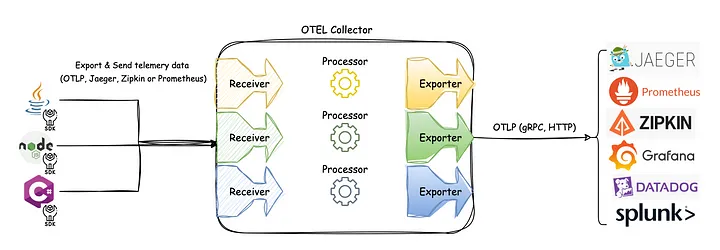序列化方案
- Java RMI采用的是Java序列化
- Spring Cloud采用的是_JSON序列化_
- Dubbo虽然兼容Java序列化,但默认使用的是_Hessian序列化_
Java序列化
原理

Serializable
- JDK提供了输入流对象ObjectInputStream和输出流对象ObjectOutputStream
- 它们只能对实现了Serializable接口的类的对象进行序列化和反序列化
1
2
3
4
5
|
ObjectOutputStream oos = new ObjectOutputStream(new FileOutputStream(FILE_PATH));
oos.writeObject(new Object());
oos.close();
|
transient
- ObjectOutputStream的默认序列化方式,仅对对象的非transient的实例变量进行序列化
- 不会序列化对象的transient的实例变量,也不会序列化静态变量
1
2
3
4
5
6
7
8
9
10
11
12
13
14
15
16
17
18
19
20
| @Getter
public class A implements Serializable {
private transient int f1 = 1;
private int f2 = 2;
@Getter
private static final int f3 = 3;
}
A a1 = new A();
ObjectOutputStream oos = new ObjectOutputStream(new FileOutputStream(FILE_PATH));
oos.writeObject(a1);
oos.close();
ObjectInputStream ois = new ObjectInputStream(new FileInputStream(FILE_PATH));
A a2 = (A) ois.readObject();
log.info("f1={}, f2={}, f3={}", a2.getF1(), a2.getF2(), a2.getF3());
ois.close();
|
serialVersionUID
- 在实现了Serializable接口的类的对象中,会生成一个serialVersionUID的版本号
- 在反序列化过程中用来验证序列化对象是否加载了反序列化的类
- 如果是具有相同类名的不同版本号的类,在反序列化中是无法获取对象的
1
2
3
4
5
6
7
8
9
10
11
12
13
14
15
16
17
18
19
20
21
22
23
24
| @Data
@AllArgsConstructor
public class B implements Serializable {
private static final long serialVersionUID = 1L;
private int id;
}
@Test
public void test3() throws Exception {
B b1 = new B(1);
ObjectOutputStream oos = new ObjectOutputStream(new FileOutputStream(FILE_PATH));
oos.writeObject(b1);
oos.close();
}
@Test
public void test4() throws Exception {
ObjectInputStream ois = new ObjectInputStream(new FileInputStream(FILE_PATH));
B b2 = (B) ois.readObject();
ois.close();
}
|
writeObject/readObject
具体实现序列化和反序列化的是writeObject和readObject
1
2
3
4
5
6
7
8
9
10
11
12
13
14
15
16
17
18
19
20
21
22
23
24
25
26
27
28
29
| @Data
@AllArgsConstructor
public class Student implements Serializable {
private long id;
private int age;
private String name;
private void writeObject(ObjectOutputStream outputStream) throws IOException {
outputStream.writeLong(id);
outputStream.writeObject(name);
}
private void readObject(ObjectInputStream inputStream) throws IOException, ClassNotFoundException {
id = inputStream.readLong();
name = (String) inputStream.readObject();
}
}
Student s1 = new Student(1, 12, "Bob");
ObjectOutputStream oos = new ObjectOutputStream(new FileOutputStream(FILE_PATH));
oos.writeObject(s1);
oos.close();
ObjectInputStream ois = new ObjectInputStream(new FileInputStream(FILE_PATH));
Student s2 = (Student) ois.readObject();
log.info("s2={}", s2);
ois.close();
|
writeReplace/readResolve
- writeReplace:用在序列化之前替换序列化对象
- readResolve:用在反序列化之后对返回对象进行处理
1
2
3
4
5
6
7
8
9
10
11
12
13
14
15
16
17
18
19
20
21
22
23
|
public class Singleton1 implements Serializable {
private static final Singleton1 SINGLETON_1 = new Singleton1();
private Singleton1() {
}
public static Singleton1 getInstance() {
return SINGLETON_1;
}
}
Singleton1 s1 = Singleton1.getInstance();
ObjectOutputStream oos = new ObjectOutputStream(new FileOutputStream(FILE_PATH));
oos.writeObject(s1);
oos.close();
ObjectInputStream ois = new ObjectInputStream(new FileInputStream(FILE_PATH));
Singleton1 s2 = (Singleton1) ois.readObject();
log.info("{}", s1 == s2);
ois.close();
|
1
2
3
4
5
6
7
8
9
10
11
12
13
14
15
16
17
18
19
20
21
22
23
24
25
26
27
28
29
30
31
| public class Singleton2 implements Serializable {
private static final Singleton2 SINGLETON_2 = new Singleton2();
private Singleton2() {
}
public static Singleton2 getInstance() {
return SINGLETON_2;
}
public Object writeRepalce() {
return this;
}
private Object readResolve() {
return getInstance();
}
}
Singleton2 s1 = Singleton2.getInstance();
ObjectOutputStream oos = new ObjectOutputStream(new FileOutputStream(FILE_PATH));
oos.writeObject(s1);
oos.close();
ObjectInputStream ois = new ObjectInputStream(new FileInputStream(FILE_PATH));
Singleton2 s2 = (Singleton2) ois.readObject();
log.info("{}", s1 == s2);
ois.close();
|
缺陷
无法跨语言
Java序列化只适用于基于Java语言实现的框架
易被攻击
- Java序列化是不安全的
- Java官网:对不信任数据的反序列化,本质上来说是危险的,应该予以回避
- ObjectInputStream.readObject()
- 将类路径上几乎所有实现了Serializable接口的对象都实例化!!
- 这意味着:在反序列化字节流的过程中,该方法可以执行任意类型的代码,非常危险
- 对于需要长时间进行反序列化的对象,不需要执行任何代码,也可以发起一次攻击
- 攻击者可以创建循环对象链,然后将序列化后的对象传输到程序中进行反序列化
- 这会导致haseCode方法被调用的次数呈次方爆发式增长,从而引发栈溢出异常
- 很多序列化协议都制定了一套数据结构来保存和获取对象,如JSON序列化、ProtocolBuf
- 它们只支持一些基本类型和数组类型,可以避免反序列化创建一些不确定的实例
1
2
3
4
5
6
7
8
9
10
11
12
13
14
15
16
17
18
19
20
21
22
23
24
25
26
27
28
29
30
| int itCount = 27;
Set root = new HashSet();
Set s1 = root;
Set s2 = new HashSet();
for (int i = 0; i < itCount; i++) {
Set t1 = new HashSet();
Set t2 = new HashSet();
t1.add("foo");
s1.add(t1);
s1.add(t2);
s2.add(t1);
s2.add(t2);
s1 = t1;
s2 = t2;
}
ObjectOutputStream oos = new ObjectOutputStream(new FileOutputStream(FILE_PATH));
oos.writeObject(root);
oos.close();
long start = System.currentTimeMillis();
ObjectInputStream ois = new ObjectInputStream(new FileInputStream(FILE_PATH));
ois.readObject();
log.info("take : {}", System.currentTimeMillis() - start);
ois.close();
|
序列化后的流太大
- 序列化后的二进制流大小能体现序列化的能力
- 序列化后的二进制数组越大,占用的存储空间就越多,存储硬件的成本就越高
- 如果进行网络传输,则占用的带宽就越多,影响到系统的吞吐量
- Java序列化使用ObjectOutputStream来实现对象转二进制编码,可以对比BIO中的ByteBuffer实现的二进制编码
1
2
3
4
5
6
7
8
9
10
11
12
13
14
15
16
17
18
19
20
21
22
23
24
25
26
| @Data
class User implements Serializable {
private String userName;
private String password;
}
User user = new User();
user.setUserName("test");
user.setPassword("test");
ByteArrayOutputStream os = new ByteArrayOutputStream();
ObjectOutputStream oos = new ObjectOutputStream(os);
oos.writeObject(user);
log.info("{}", os.toByteArray().length);
ByteBuffer byteBuffer = ByteBuffer.allocate(2048);
byte[] userName = user.getUserName().getBytes();
byte[] password = user.getPassword().getBytes();
byteBuffer.putInt(userName.length);
byteBuffer.put(userName);
byteBuffer.putInt(password.length);
byteBuffer.put(password);
byteBuffer.flip();
log.info("{}", byteBuffer.remaining());
|
序列化速度慢
- 序列化速度是体现序列化性能的重要指标
- 如果序列化的速度慢,就会影响网络通信的效率,从而增加系统的响应时间
1
2
3
4
5
6
7
8
9
10
11
12
13
14
15
16
17
18
19
20
21
22
23
24
25
26
27
28
29
30
31
32
33
34
| int count = 10_0000;
User user = new User();
user.setUserName("test");
user.setPassword("test");
long t1 = System.currentTimeMillis();
for (int i = 0; i < count; i++) {
ByteArrayOutputStream os = new ByteArrayOutputStream();
ObjectOutputStream oos = new ObjectOutputStream(os);
oos.writeObject(user);
oos.flush();
oos.close();
byte[] bytes = os.toByteArray();
os.close();
}
long t2 = System.currentTimeMillis();
log.info("{}", t2 - t1);
long t3 = System.currentTimeMillis();
for (int i = 0; i < count; i++) {
ByteBuffer byteBuffer = ByteBuffer.allocate(2048);
byte[] userName = user.getUserName().getBytes();
byte[] password = user.getPassword().getBytes();
byteBuffer.putInt(userName.length);
byteBuffer.put(userName);
byteBuffer.putInt(password.length);
byteBuffer.put(password);
byteBuffer.flip();
byte[] bytes = new byte[byteBuffer.remaining()];
}
long t4 = System.currentTimeMillis();
log.info("{}", t4 - t3);
|
ProtoBuf
- ProtoBuf是由Google推出且支持多语言的序列化框架
- 在序列化框架性能测试报告中,ProtoBuf无论编解码耗时,还是二进制流压缩大小,都表现很好
- ProtoBuf以一个**.proto**后缀的文件为基础,该文件描述了字段以及字段类型,通过工具可以生成不同语言的数据结构文件
- 在序列化该数据对象的时候,ProtoBuf通过.proto文件描述来生成Protocol Buffers格式的编码
存储格式
- Protocol Buffers是一种轻便高效的结构化数据存储格式
- Protocol Buffers使用T-L-V(标识-长度-字段值)的数据格式来存储数据
- T代表字段的正数序列(tag)
- Protocol Buffers将对象中的字段与正数序列对应起来,对应关系的信息是由生成的代码来保证的
- 在序列化的时候用整数值来代替字段名称,传输流量就可以大幅缩减
- L代表Value的字节长度,一般也只占用一个字节
- V代表字段值经过编码后的值
- 这种格式不需要分隔符,也不需要空格,同时减少了冗余字段名
编码方式

- ProtoBuf定义了一套自己的编码方式,几乎可以映射Java/Python等语言的所有基础数据类型
- 不同的编码方式可以对应不同的数据类型,还能采用不同的存储格式
- 对于Varint编码的数据,由于数据占用的存储空间是固定的,因此不需要存储字节长度length,存储方式采用T-V
- Varint编码是一种变长的编码方式,每个数据类型一个字节的最后一位是标志位(msb)
- 0表示当前字节已经是最后一个字节
- 1表示后面还有一个字节
- 对于int32类型的数字,一般需要4个字节表示,如果采用Varint编码,对于很小的int类型数字,用1个字节就能表示
- 对于大部分整数类型数据来说,一般都是小于256,所以这样能起到很好的数据压缩效果
编解码
- ProtoBuf不仅压缩存储数据的效果好,而且编解码的性能也是很好的
- ProtoBuf的编码和解码过程结合**.proto**文件格式,加上Protocol Buffers独特的编码格式
- 只需要简单的数据运算以及位移等操作就可以完成编码和解码
参考资料
Java性能调优实战












